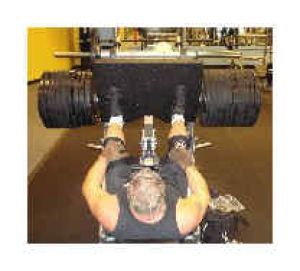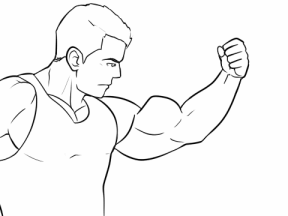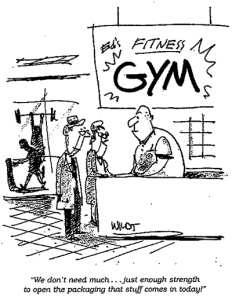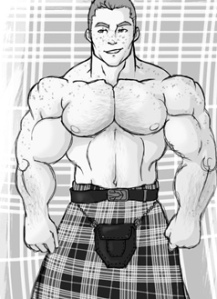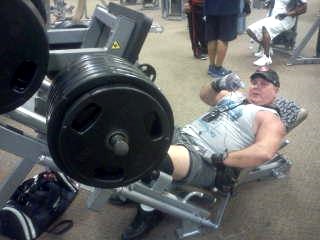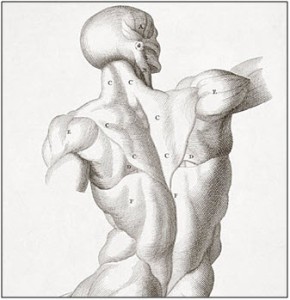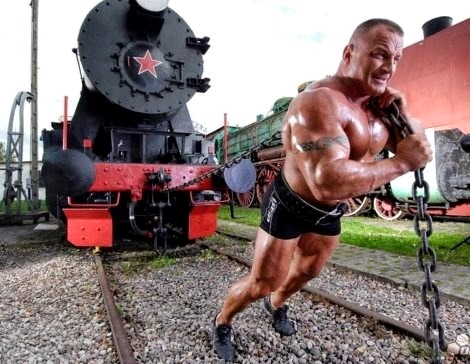Strength training can take a toll on your body and your mind.
Here’s how to avoid staying in a rut you can’t pull out of.
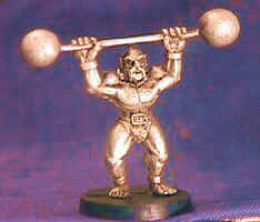
Anybody would think that the weight lifting / strength training lifestyle would be good fer ya.
But once you’ve been doing it for a while,
… there are gonna be times when you come to doubt it.
You roll out of bed in the morning with your shoulder poppin’,
and your knees hurtin’,
and your elbows achin’,
and your back screamin’….
Of course, you might just chalk that up to getting old…..
I’m 52, and stuff is gonna hurt just natural from chasin girls all those years.
Naaaah…… 52 is the new 32, din’t ya hear?
Yeah, raht.
We all know that weight training IS good fer ya, especially if you’re over 40 –
it allows you to keep the muscle you already got,
… and maybe even put on some new muscle, too….
it helps keep your body producing vital hormones like testosterone and growth hormone….
it stimulates the mind and helps keep you alert and focused……
it is a vital part of maintaining libido, promotes firm erections, and drives motivation…..
it help keep you looking younger and fitter than most people fifteen or twenty years younger than you….
( it also puts you in close proximity with gym hotties you probably wouldnt get near without tuckin’ five dollar bills in their g-strings otherwise….. )
But some days……… yow.
I recently went through a period of time, about 5 weeks, where my training was just draggin’.
Man, I mean really draggin’.
It wasn’t like I wasnt lifting as heavy —
—it just seemed that I was just working a lot harder to get it in.
My joints seemed to hurt more, and my recovery slowed to a crawl.
I wasn’t adding more weight to the stack —
— and I was walking out of the gym every day feeling completely done in.
Now,
…. let’s talk about the several possible culprits here,
———- assuming you don’t just say that I’m past it.
Cause I ain’t.
Nowhere near.
If you find yourself in a similar situation, ask yourself the questions I have listed in BOLD.
The first thing I did when I noticed the lack of progress and the additional soreness, was to have a physical and my blood checked.
What the doctor and I were looking for was a reduction in my T-Levels, or a physiological problem, like with red blood cells or liver function.
And, although I did have raised levels of creatinine
( a by product of creatine supplementation, but also a marker for reduced liver function )
…… and a surplus of Iron —
( mens bodies don’t use much iron, and if this additional iron isn’t cleared from the system, it can be dangerous ),
there wasn’t anything immediately pertinent to the issue at hand…..
T levels looked nominal, red blood cells slightly high but ok.
No infection, nothing that out of the ordinary.
This is the first question one should ask —
— is there a medical condition that could be causing a lag in training?
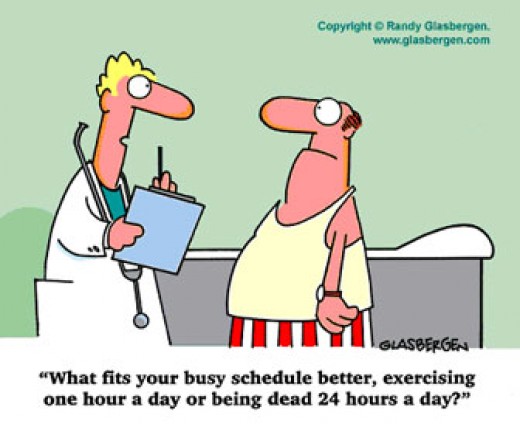
Secondly, I looked at my sleep and rest patterns.
Again, somewhat problematic —- I work at night – and sleep a broken pattern–
a nap in the morning, then hit the gym, and a couple hours sleep before work in the evening.
But, the truth is, that really hasn’t changed much in the last coupla years — I see no reason why it would be affecting me much more only now.
I can’t discount the fact that I am lifting more weight — I am working harder — than ever before, and that very well could mean that I need more sleep than ever before, too.
I found an extra half an hour I was wasting in the morning before my nap, and another half hour in the evening – an extra hour of sleep translates into 20% more sleep – which should translate into me being more rested – and boosting my recovery, too.
As far as ‘rest days’ is concerned, I was lifting five times a week, with a ‘compressed all around day’ on Saturday, which included several leg components previously worked that week on Wednesdays ( my regular leg day ), including heavy squats and deadlifts.
Over-training could be a possibility, certainly.
I decided that, for a time, I would delete the Saturday ‘all around’ workout completely, and especially not work my legs on any other day than my regular legs day.
An extra off day shouldn’t affect my strength negatively, as long as I’m hitting it hard the rest of the week.
As you know, your muscles only grow when they’re at rest – so I should actually gain strength in the long run.
So, the second question one should ask —
— Am I getting enough rest, sleep and recovery time?
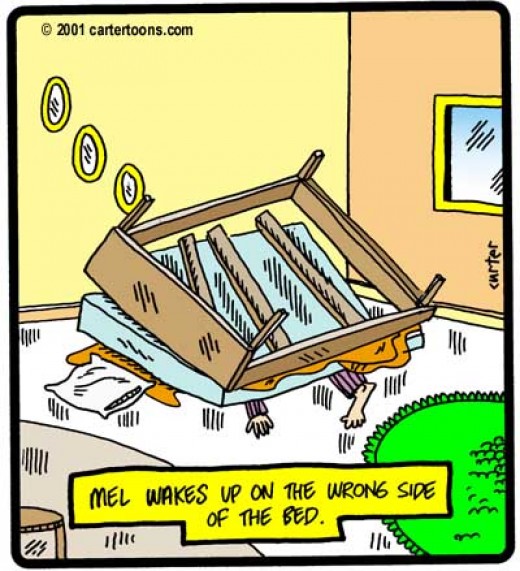
Now it was time to look at my nutrition.
I realized right off that my protein intake had been seriously reduced over the last couple months due to a Spring lean-out program I had been following, which stresses fruits and vegetables over meat — very effective at leaning me out, but clearly might be affecting my strength.
( Hey – ya can’t blame me for wanting to look good in my bathing suit, ya know? )
I had not compensated for the reduction in protein with more whey, because I wanted to avoid the calories, instead adding more BCAA’s.
Studies indicate that whole proteins are more effective in this context.
I was also not ‘eating up’ for a training session like I used to… and decided to follow my carb intake more carefully to ensure the necessary fuel for my workouts.
The best strength training diet contains enough calories to run the body and a little extra to build muscle – in the proportion of 40% proteins, 30% carbs, and 30% fat.
A daily caloric restriction below 2500 is not efficient for strength building.
Third Question —
Am I getting enough good calories – at the correct ratio – to fuel my workouts?

Another important concern has to do with supplementation.
I wondered how resistant my body had grown to absorbing certain supplements I had been using for a long period of time.
Creatine is a good example… I don’t ‘cycle’ Creatine as some people do, i don’t see the point.
However, I did realize that my creatine intake was sporadic- I would take it on my workout days, but not on my rest days… was that causing my creatine levels to be less than optimally loaded?
The fact that my creatinine levels were high makes me wonder whether there’s too much, or too little, creatine being reserved in my cells.
I decided to be more consistent in my creatine intake, and that of beta-alanine as well.
I’ll have another blood test in six months…. we’ll see what the regularity of intake will do to my creatinine levels….. and go from there.
Glutamine is a terrific supplement to aid in recovery — again, it’s used extensively on my workout days, but hardly at all on my off days – and now that I have an extra off day, I will have to make an extra special effort to get it in.
Two supplements that I had taken completely off my list were: Glucosamine/Chondrotin/MSM and Cissus… they were expensive, and I thought I could do without them…..
I realize now that they had been very effective in keeping my joints feeling well, and the pain in check, and have since added them back.
I have also added back a testosterone booster …. I was using X-Test by Xcience, which I found to be excellent, but it was pulled by my supplier, and I have been doing without. I have added a product called “Tribuloid”, and am currently evaluating it. I’ll let ya know.
I guess the bottom line on these supplements is this:
……… you might not feel them working, but you’ll miss them when they’re gone.
Fourth Question:
Am I using those supplements that help me attain my goals?
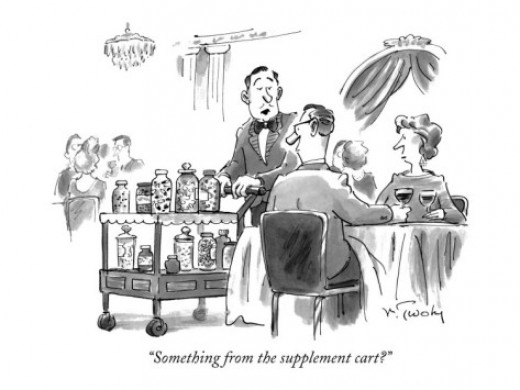
A lot of guys who find themselves stuck in a rut start with the next question…. and it certainly is an important one…. because of muscle fibers’ uncanny ability to adapt themselves to a workout program….. you’ve got to mix up your workout, and try to keep your muscles off balance— constantly responding and growing.
This is the ‘muscle confusion’ theory… it’s almost like your muscles are like a repetitive job worker— they get bored of doing the same old work, and just kinda do the minimum required of them. Punch in, do whats required, punch out. Yawn yawn.
If you wanna get stronger, you’ve got to constantly change up your workout- the intensity, the movements, the implements, even the order of when you work certain groups.
The changes can be simple, like alternating wide grip bench presses with narrow grip, or more complicated, like adding dumbbells and machines to overhead pressing with just a bar.
A change like using a straight bar instead of an easy curl bar will force your body to respond, when it has adapted to curls the old way, you betcha. Even if you have to temporarily lighten up the weight.
I modified my workout so that I’m adding new movements, and variations on old ones. I’m alternating stiff legged deadlifts with sumos, for instance, and the variety feels great.
I changed the order of my push-pull sets… and varying the intensity as well.
I needed the change, and it really rejuvenated my whole routine.
Question Five:
Am I constantly provoking my muscles to add strength with new challenges??
This last one is the one most overlooked, and also the one that causes the most people to give up strength training all together…….
It’s not enough to go to the gym, and do the work.
You gotta have the eye of the tiger while you’re doing it.
It’s one part intensity, one part aggression, one part just plain bad attitude.
You gotta know you’re a monster…. and there ain’t a weight made you cant lift.
Call me a jerk, but get outta my way, cause it’s time to hit it.
Pain? I’ll worry about that after I’m done lifting these cream puff weights.
It just boils down to attitude….. you gotta stay fired up – or find a way to get fired up.
And everybody has a different way of doing it, although it really is all self-talk.
By self talk, I mean encouraging yourself through positive statements, and avoiding thinking negative.
It can’t be: ” oh jeez, not time for the gym again…”
It’s gotta be: “oh yes!!! Time for the GYM !!! ”
The last question:
Do I have my mind right???
…………………….. Well, DO YA ?????
HOY!!!





